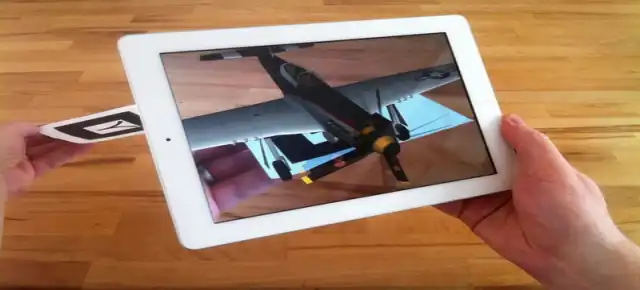Augmented Reality Apps With Apple’s ARKit
Augmented reality, commonly referred to simply as AR, has been one of the hottest technology buzzwords for quite some time now, promising to seamlessly blend virtual elements with the real world. But it wasn’t until September 12, 2017,that AR grabbed the attention of iOS developers around the world because that’s when Apple announced its new framework for creating augmented reality experiences, ARKit.
What Is ARKit?

ARKit is Apple's augmented reality development framework for iOS mobile devices. It combines advanced scene processing, camera scene capture, device motion tracking, and display conveniences to help developers create mesmerizing AR experiences using either the back camera or front camera of an iOS device.
The first version of ARKit was released on September 19, 2017, as part of iOS 11, the eleventh major release of the iOS mobile operating system. Since then, there were two major releases of ARKit: ARKit 1.5, which added support for 2D image detection, and ARKit 2.0, which extends this support to offer full 2D image tracking.
As a result of the improvements Apple has made to ARKit since its initial release, it’s now possible to use the framework to incorporate movable objects, such as 3D product renderings, into AR experiences and trigger them based on 2D images like posters, artwork, or signs. What’s more, the latest version of ARKit even makes it possible for multiple people to experience the same AR experience at the same time and come back to it later in the same state.
“We want everybody to be able to use AR, and so we've taken the complexity that developers would normally have to do in their apps and made it simple for them to convert all of their apps to an AR experience,” said Apple CEO Tim Cook. “And the thing that is very different about Apple is that, in one day, we can make AR available for hundreds of millions of people.”
Do I Have to Use ARKit to Develop Augmented Reality Apps for iOS?
This question is easy to answer: no, there are many other AR frameworks on the market.
What makes ARKit the right choice for all new iOS developers is its first-class platform support (ARKit is compatible with all devices that run on iOS 11 and have A12, A11, A10, or A9 chips), fast and stable motion tracking, the ability to judge the amount of light present in a scene and use this information to apply the perfect amount of lighting to virtual objects, and more.
The biggest advantage of competing AR frameworks is their support for multiple platforms. If you would like to develop an AR app and release it, for example, both on iOS and Android without having to essentially rewrite it from scratch, you need a multi platform AR framework, which leaves ARKit out of the question.
Here are the top 5 multi platform AR frameworks you should know about:
Vuforia

This market-leading AR framework supports iOS, Android, Universal Windows Platform, and Unity. Vuforia allows you to attach AR content to 3D models, images, objects with flat surfaces and multiple sides, cylindrical and conical shapes, products with rich surface details, and VuMarks. The framework handles background effects, video playback, virtual buttons, occlusion management, and many other things.
Kudan

This Android and iOS augmented reality framework is perfect for all applications that demand excellent performance because it uses a high-performance engine and supports SLAM(Simultaneous Localization and Mapping), which is a technology that understands the physical world through feature points.
ARToolKit

If you’re a fan of open-source software, ARToolKit might just be the right AR framework for you. With its automatic camera calibration utilities, simultaneous tracking of several objects, OpenSceneGraph support, and a plethora of other features, ARToolKit simplifies AR development to such an extent that anyone can do it.
Wikitude

Offering support for object and scene recognition, instant tracking, image recognition, location-based services, multiple image targets, extended tracking, cloud recognition, and 3D augmentations, it’s no wonder that Wikitude is a learning AR framework. Because Wikitude supports Android, iOS, Windows, and smart glasses, you can code your app only once and run it everywhere.
Maxst

Maxst is a multi platform AR framework that provides all the features and environments developers need to create game-changing AR apps. It’s priced affordably, and you can get started with it for free. Thanks to its extensive documentation and helpful forums, you should be able to get your first AR app up and running in no time.
Getting Started with ARKit
There are a couple of things you need before you can start building AR apps for iOS using Apple’s ARKit:
Compatible iOS device
To test your AR app, you need a compatible iOS device. We recommend you visit the iOS Device Compatibility Reference site to see which iOS devices are compatible with ARKit.Mac computer
As you may already know, you need a Mac computer to develop iOS app, at least using without any third-party solutions. If you already have one, make sure that it runs macOS Sierra 10.12.4 or newer.Apple ID
You won’t be able to obtain Apple’s integrated development environment and publish your AR app on the App Store without an Apple ID, so make sure to create one here. Besides Apple ID, you should also register for an Apple developer account.Xcode
Apple has its own integrated development environment for developing software for macOS, iOS, watchOS, and tvOS, and you should use it. Xcode is available for free from the Mac App Store. ARKit is included in the latest version of Xcode, making everything so much more convenient.
With everything ready, it’s time to create your first AR app:
- Launch Xcode and select the Augmented Reality App project template.
- Choose options for your new project.
- We recommend you choose Swift as the programming language, but you can also choose Objective-C if you already know it.
- The selection of Content Technology is a little bit more complex, and this article provides a good explanation.
- Preview the AR app on your iOS device by selecting “Window” from the top menu bar, clicking “Devices and Simulators,” and double clicking your iOS device.
- The Augmented Reality App project template comes with a simple AR demo that displays a fighter jet in the air in front of your device’s camera.
- To run your first AR app, click the Run option located in the top menu bar in Xcode.
- You should see the app on your iOS device!
It’s beyond the scope of this article to describe in detail how to customize the sample app or build something similar from scratch, but we hope that you now understand that anyone can start developing AR apps in just a couple of minutes.
Conclusion
Augmented reality has the potential to fundamentally change our relationship with the world around us, and it’s up to developers to make it happen. Apple has done its part, releasing an augmented reality framework and software development tools that make it possible for anyone to get started developing interesting AR apps in no time, and we’ve explained just how accessible it has made AR development.



0 Comments:
Publicar un comentario